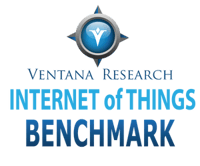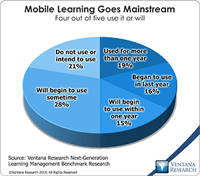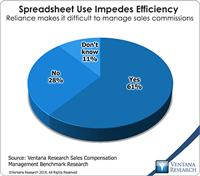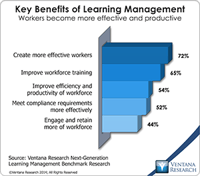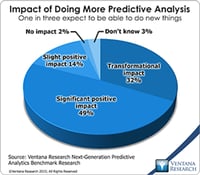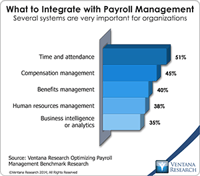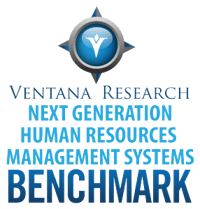I have been meaning to write about Salesforce since its Dreamforce 2015 conference. Salesforce provides a platform, tools and applications for business and IT who claims to be the ‘no software’ company which as you will read is exactly what happened on May 10th. Heck, Salesforce is making a lot of advances on its platform, its applications and even with Analytics and the Internet of Things. These changes are at the center of what at our analyst firm calls digital business innovation. Much of...
Read More
Topics:
Sales,
Salesforce.com,
Marketing,
NA14,
Analytics,
Business Analytics,
Business Collaboration,
Business Mobility,
Cloud Computing,
Customer Service,
IOT,
CRM,
Customer Performance Management (CPM),
Sales Performance Management (SPM)
Organizations are facing a digital transformation, as I have written, that is rapidly changing the applications and services that businesses use to operate and deliver information. This new digital generation addresses the expectations of consumers and business partners for information and service in real time. One example of it is enterprise messaging. Recently I wrote about the shift to this technology and the challenges it poses for organizations that lack sufficient skills. However, new...
Read More
Topics:
Big Data,
Social Media,
Enterprise messaging, Internet of Things, IoT, mid,
Operational Performance Management (OPM),
Business Analytics,
Business Collaboration,
Cloud Computing,
Governance, Risk & Compliance (GRC),
Uncategorized,
Business Performance Management (BPM),
Customer Performance Management (CPM),
Financial Performance Management (FPM),
Information Management (IM),
Sales Performance Management (SPM),
Supply Chain Performance Management (SCPM)
The learning management system (LMS) offers opportunity for organizations to progressively enhance the effectiveness of their workforce. An advanced LMS can be more than a digital version of an organization’s training programs for specific jobs or to achieve compliance with policies and regulations. It can provide dynamic yet informal learning that business units can create, deploy and sustain through their own efforts. Last year I outlined the benefits of this new generation of learning...
Read More
Topics:
Human Capital,
LMS,
Operational Performance Management (OPM),
Business Analytics,
Business Collaboration,
Cloud Computing,
Uncategorized,
Business Performance Management (BPM),
Customer Performance Management (CPM),
Financial Performance Management (FPM),
Sales Performance Management (SPM),
Supply Chain Performance Management (SCPM)
I hope this title captures your attention; I’m trying to make a point about the chaos going on in managing and operating marketing. What marketing needs in 2016 is to manage and optimize its efforts in a more unified manner. This perspective kicks off a new series on the challenges for marketing to automate or execute tasks and manage toward maximum performance. We all know that the craft of marketing is in need of significant transformation, from the CMO throughout the entire marketing...
Read More
Topics:
Big Data,
Predictive Analytics,
Social Media,
Operational Performance Management (OPM),
Business Analytics,
Business Collaboration,
Business Intelligence,
Cloud Computing,
Location Intelligence,
Operational Intelligence,
Uncategorized,
Business Performance Management (BPM),
CMO,
Customer Performance Management (CPM),
Financial Performance Management (FPM),
Information Applications (IA),
Information Optimization,
Sales Performance Management (SPM)
For several years I have been advocating that sales organizations adapt their processes and applications to optimize both sales performance and the customer experience. For details see my research agenda for last year. However, it appears that not many sales organizations have responded to this challenge; many can barely maintain their quarterly sales forecasts and monthly pipeline, track progress toward quotas and ensure that sales commissions are processed promptly and paid accurately. A...
Read More
Topics:
Big Data,
Predictive Analytics,
Operational Performance Management (OPM),
Business Analytics,
Business Collaboration,
Uncategorized,
Business Performance Management (BPM),
Customer Performance Management (CPM),
Financial Performance Management (FPM),
Sales, SFA, SPM, Sales Performance Management, Sal
Businesses and their human resource organizations feel pressure to maximize the value of their human capital in today’s intensely competitive world. Many have made or considered investments in new applications that better exploit information to efficiently recruit, engage and retain the best talent. Advanced applications not only advance these processes but also help management assess the performance of the workforce and compensate individuals fairly so that they advance their careers and find...
Read More
Topics:
Big Data,
Predictive Analytics,
HCM, HR, HRMS, Workforce Management, Learning Mana,
Human Capital,
Business Analytics,
Business Collaboration,
Cloud Computing,
Governance, Risk & Compliance (GRC),
Uncategorized,
Business Performance Management (BPM),
Customer Performance Management (CPM),
Financial Performance Management (FPM),
Information Management (IM)
Technology innovation is accelerating faster than companies can keep up with. Many feel pressure to adopt new strategies that technology makes possible and find the resources required for necessary investments. In 2015 our research and analysis revealed many organizations upgrading key business applications to operate in the cloud and some enabling access to information for employees through mobile devices. Despite these steps, we find significant levels of digital disruption impacting every...
Read More
Topics:
Big Data,
Predictive Analytics,
Social Media,
Human Capital,
Operational Performance Management (OPM),
Analytics,
Business Analytics,
Business Collaboration,
Business Intelligence,
Cloud Computing,
Governance, Risk & Compliance (GRC),
Location Intelligence,
Operational Intelligence,
Uncategorized,
Business Performance Management (BPM),
Customer Performance Management (CPM),
Financial Performance Management (FPM),
Information Applications (IA),
Information Management (IM),
Sales Performance Management (SPM),
Supply Chain Performance Management (SCPM)
Over the last four years Domo, a new brand in cloud-based data and analytics software, has worked to enable its customers to understand, collaborate and act on data to achieve business results. Led by its founder and CEO, Josh James, the company has worked to deliver software that provides both a good user experience and business value. Recently, at its 2015 customer conference Domopalooza, the company presented itself and its products to the general public. I had a chance to meet with company...
Read More
Topics:
Big Data,
Human Capital,
Operational Performance Management (OPM),
Analytics,
Business Analytics,
Business Collaboration,
Business Intelligence,
Cloud Computing,
Collaboration,
Governance, Risk & Compliance (GRC),
Business Performance Management (BPM),
Customer Performance Management (CPM),
Domo,
Financial Performance Management (FPM),
SAB Miller,
Sales Performance Management (SPM),
Supply Chain Performance Management (SCPM)
Historically workforce management has been centered on tracking time and attendance, absences and leaves. Organizations view the time and attendance system as the top priority to integrate with the payroll system; in our payroll management benchmark research half (51%) of organizations called it very important. However, only one in five have integrated the two to streamline processes. So limited an administrative and operational focus does not contribute to improving worker productivity or...
Read More
Topics:
Big Data,
Human Capital,
Human Capital Management,
Operational Performance Management (OPM),
Business Analytics,
Business Collaboration,
Cloud Computing,
Governance, Risk & Compliance (GRC),
Business Performance Management (BPM),
Financial Performance Management (FPM),
HR,
Risk & Compliance (GRC),
Workforce Management
Ventana Research defines a human resources management system (HRMS) as the set of applications and associated processes that store and manage the employee information used by an organization’s human resources department. New technologies make it possible for the HRMS to perform better and be easier to use by HR professionals and members of the workforce. The range of evolving technologies impacting the development of the HRMS include business analytics, big data, cloud computing, mobile...
Read More
Topics:
Big Data,
Social Media,
Human Capital,
Human Capital Management,
Operational Performance Management (OPM),
Business Collaboration,
Cloud Computing,
Business Performance Management (BPM),
HR,
HRMS


